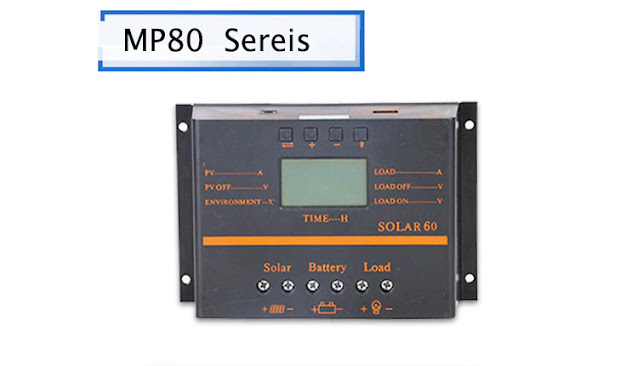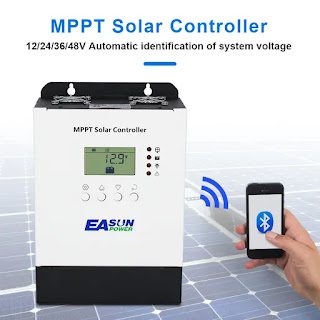Solar charge controllers are required by most solar power systems that involve the use of batteries. They work to regulate the power as it moves from the solar panels to the batteries. A proper charge controller will keep the batteries from being overcharged.
Wait...
If you are looking for solar systems, with Ether elastic technology, then take a look at this:
Solar Radiant Energy: Ether Elastic Technology
✔ The space itself is the loss of inertia of the dielectric. Faraday: Loss of inertia dielectric produces a magnetic field.
✔ So, the smaller the space, the higher the capacitance
✔ The dielectric is a stress of the Ether, which is elastic. It allows inductive propagation light.
✔ A technology that stimulates Ether elasticity, with resonance, produces free energy:
✔ Pull in infinite energy from the sun with Ether elastic technology
✔ In essence, this is a version created from the original Nikola Tesla version: Radiant energy
What Is A Solar Charge Controller?
The simplest kind of charge controller functions to monitor the battery voltage and opens the circuit to stop the charging process when voltage reaches a certain level. In early controllers, this was accomplished with the use of a mechanical relay.
Eventually, pulse width modulation (PWM) became the standard for the charge controlling mechanism. This is a technique by which the amount of power transferred to a battery lowers gradually as the battery gets closer to maximum charge. PWM extends battery life even more, as it decreases stress on the battery. It's also possible to use a PWM controller to keep batteries "floating," or in a fully charged state, for as long as you like. PWM chargers are more complicated, but they tend to be more durable, as they don't rely on any breakable mechanical connections.
The latest advancement in solar charge controllers is maximum power point tracking, or MPPT. The central advantage of MPPT controllers is their ability to convert extra voltage into amperage. This feature has a couple of major benefits.
Solar panels produce direct current, meaning the electricity from the panels flows in only one direction. They must do, as they cannot produce any other form of current. This current is passed to both the charge controller to top up the batteries and operate household items or to the inverter, to pump electricity into the grid if there is excess.
The quality of the charge controller will directly affect the life of the backup batteries. This is due to the particular chemistry involved in the depletion and recharging of the Lead Acid Accumulator batteries. When the battery is depleted of charge, the lead plates inside the battery are corroded. It is this corrosion that provides the electricity. When the battery is recharged, the plates are rebuilt, the opposite of the depleting reaction.
Sufficient charge delivered in the right volumes at the right time will allow the terminal plates inside the battery to be restored to as close to their previous condition as possible. This happens through growth of metal crystals on the surface of the plate. If this crystal growth does not happen at the optimum rate to generate large stable crystals, chunks of the metal will drop off the plate and build up at the base of the battery. This is the cause of the slow degeneration of car and other types of lead acid batteries.

Lead Acid Accumulator batteries are expensive and also contain a great deal of material and so have a high manufacturing energy. Selecting a good quality charge controller will maximize the life of these batteries in a solar home system. Buying a cheaper controller will result in shorter battery life and a greater long term cost as you will need to replace the batteries sooner than you should. Then, unless you want the same thing to happen, you will also need to replace the charge controller.
Purchasing a good quality charge controller will give you peace of mind and greater savings in the long term.
During this time when prices of nearly everything seem to be climbing while incomes are not increasing, more and more people find themselves searching for ways to decrease costs. One category that hits people's wallets particularly hard is that of energy costs. Solar panels are becoming increasingly popular as their technology becomes perfected and people find solace in a reliable way to effectively reduce or eliminate their monthly electric bill. There are two distinct categories of solar energy panels - those that feed energy to the local utility grid and those that use batteries to store captured solar power. For those who own solar panels with batteries, there is one minor drawback that has a simple remedy: a solar panel charge controller.
Solar Charge Controller Choice, MPPT Versus PWM:
Highlights:
Of late I've written about my own experience of installing a solar system on our boat. We each have different reasons to consider installing a solar system, from simply wanting to keep our starter battery topped up between visits, to our reason, live aboard boaters wanting to reduce shore power usage. From our point of view, the biggest benefit comes when we go off-grid. Free electrical support for our leisure batteries.
The point of this article is to help the reader choose the correct solar controller for their own use. For your own peace of mind work on the basis that every solar setup requires a controller. Batteries are expensive items and don't deserve to be damaged through overcharging. A low-end charge controller is not expensive and will ensure that your battery is not overcharged, and just as important, it will ensure that there is no back voltage to the solar panels when the panel is not producing power.
The two most common charge controllers are PWM (pulse width modulator) and MPPT (maximum power point tracking). They each have their own characteristics. Let us have a look at both.
Cheap PWM charge controllers really are quite clever though not particularly efficient. They are simply a high speed electronic switch. They operate by fluttering on and off extremely rapidly and the speed of switching, controls the level of voltage delivered to the battery. If you want to simply look after a starter battery while you are away from the boat or RV, then a small 15 or 20-watt panel wired through a 10-amp PWM charge controller will do exactly what you want. That same panel, without the controller could easily damage your battery.
MPPT solar controllers however, are very clever and extremely efficient. They are also more expensive than PWM's. I'd like to put this into context though. Because of the size of our boat we are limited to only four leisure batteries. These are Trojan T105 deep cycle batteries and currently they would cost around £500 to replace. Our Victron MPPT 75/15 solar charge controller cost less than a single battery. I have total faith in it and know I can trust it to squeeze every-last electron out of the panels without damaging the batteries.
The reader should always remember that 12-volt solar panels will produce much more than 12 volts in even moderately bright weather. We have three solar panels on the boat's roof, and because MPPT really likes higher voltages we have wired them in series. The thing is that these 'so called' 12-volt panels produce up to 22 volts each! Wiring the panels in series means that we are feeding up to 66 (yes - sixty-six) volts into our charge controller. You may have noticed the '75/15' in the name of the Victron controller. It means that this controller is happy to receive up to 75 volts from the panels, and will happily produce up to 15 amps from the controller to the batteries! Briefly, the controller converts panel voltage from DC to AC. It then re-converts back to DC at the voltage the battery requires. Any excess voltage is converted to extra amps for the batteries!
Solar Radiant Energy: Ether Elastic Technology
✔ The space itself is the loss of inertia of the dielectric. Faraday: Loss of inertia dielectric produces a magnetic field.
✔ So, the smaller the space, the higher the capacitance
✔ The dielectric is a stress of the Ether, which is elastic. It allows inductive propagation light.
✔ A technology that stimulates Ether elasticity, with resonance, produces free energy:
✔ Pull in infinite energy from the sun with Ether elastic technology
✔ In essence, this is a version created from the original Nikola Tesla version: Radiant energy





